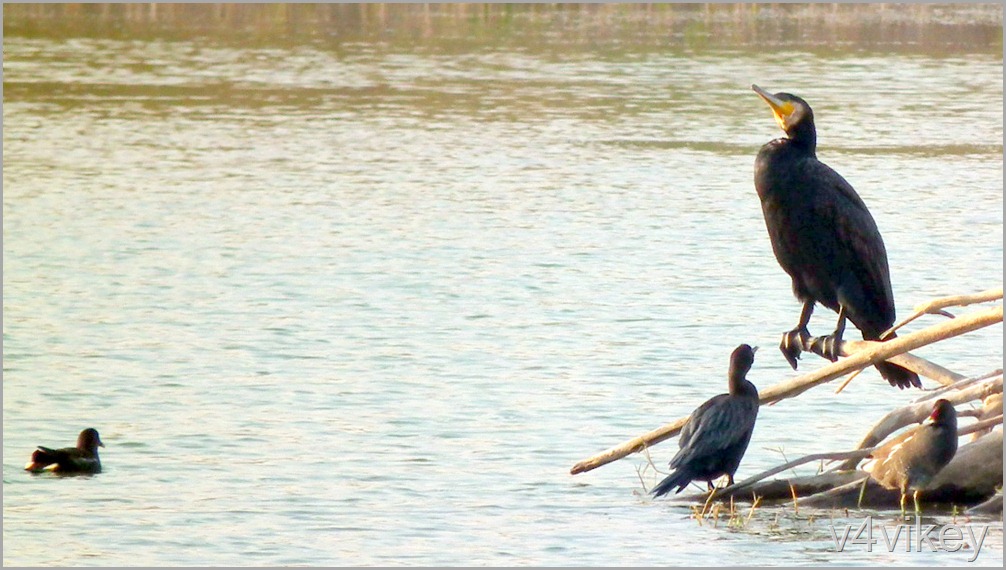
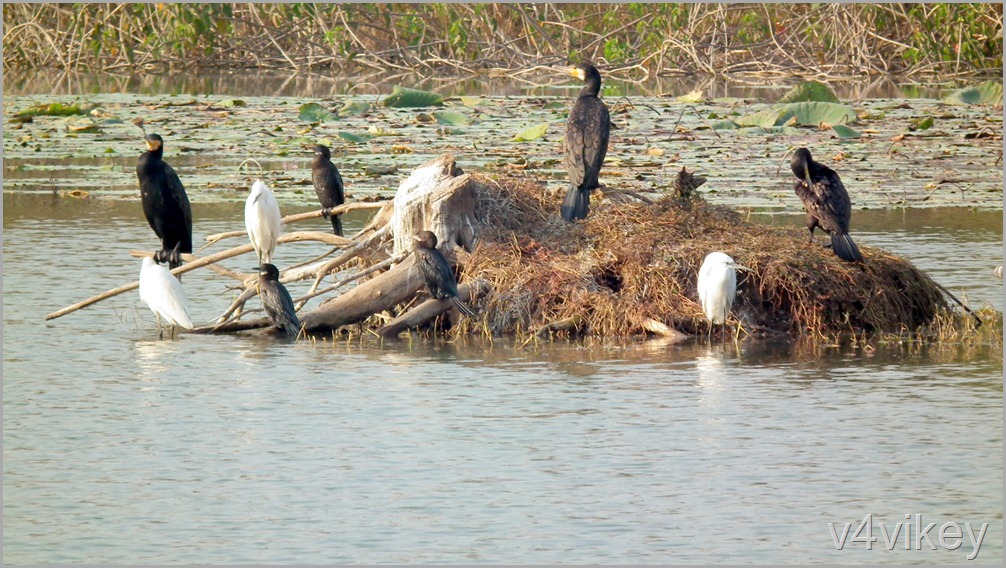
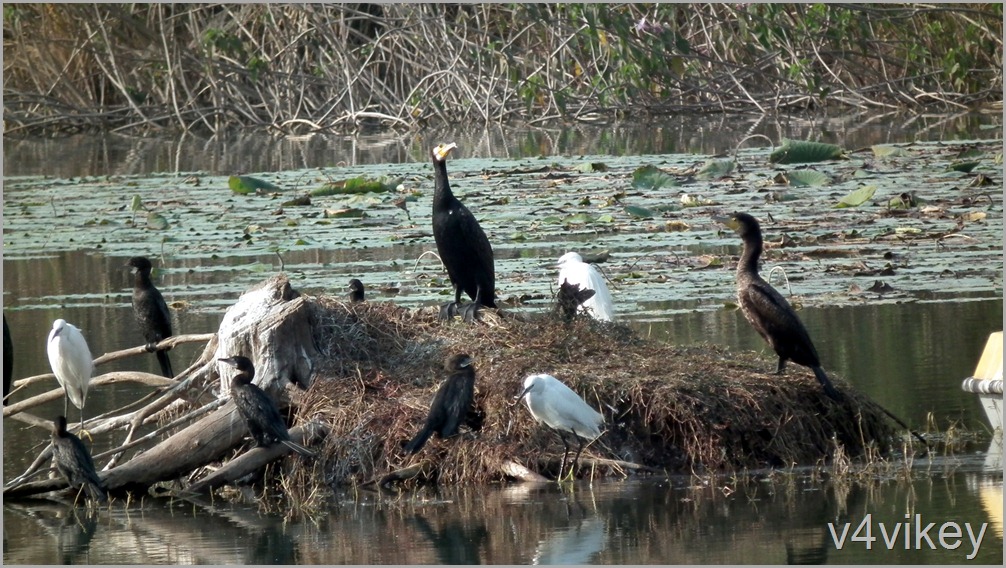
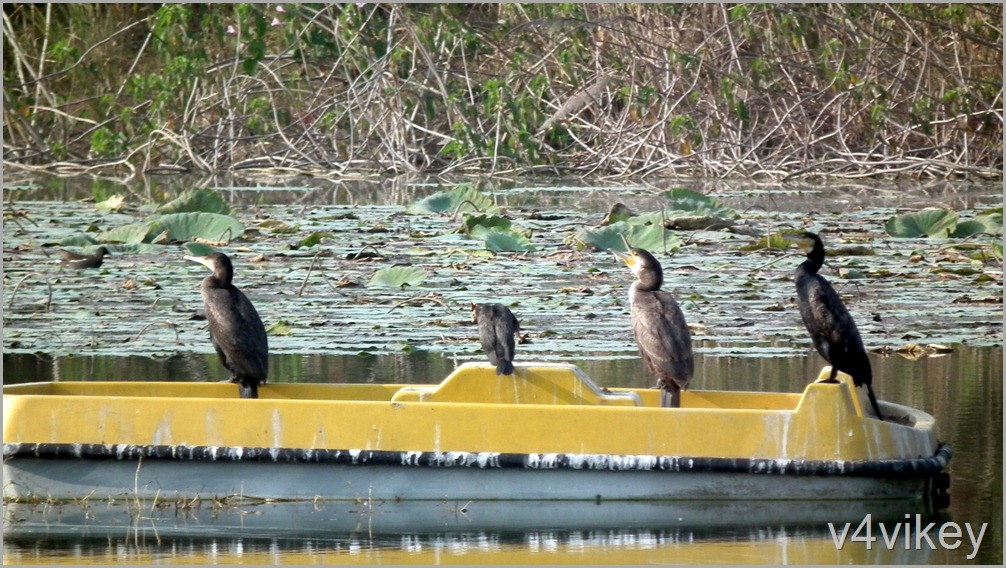
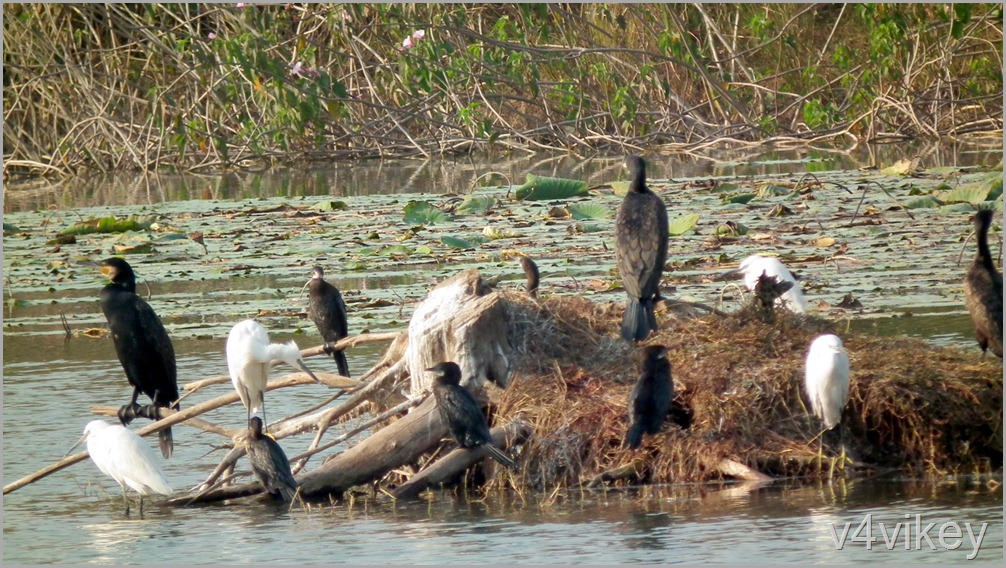
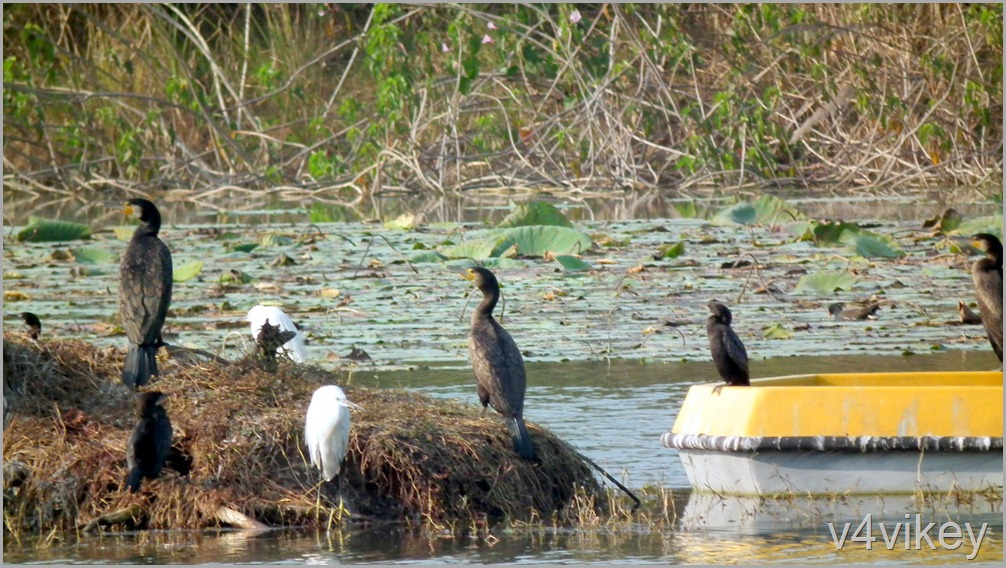
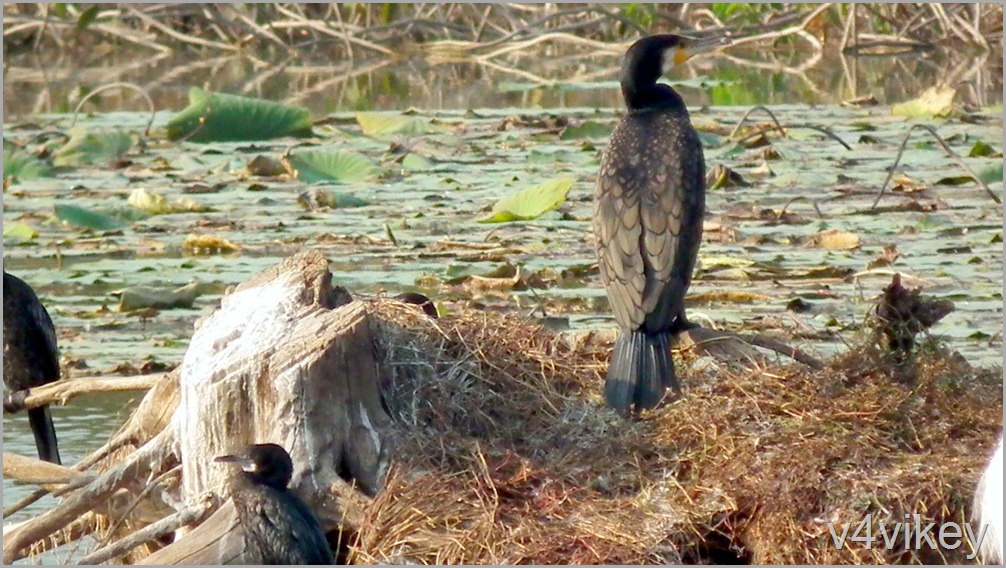
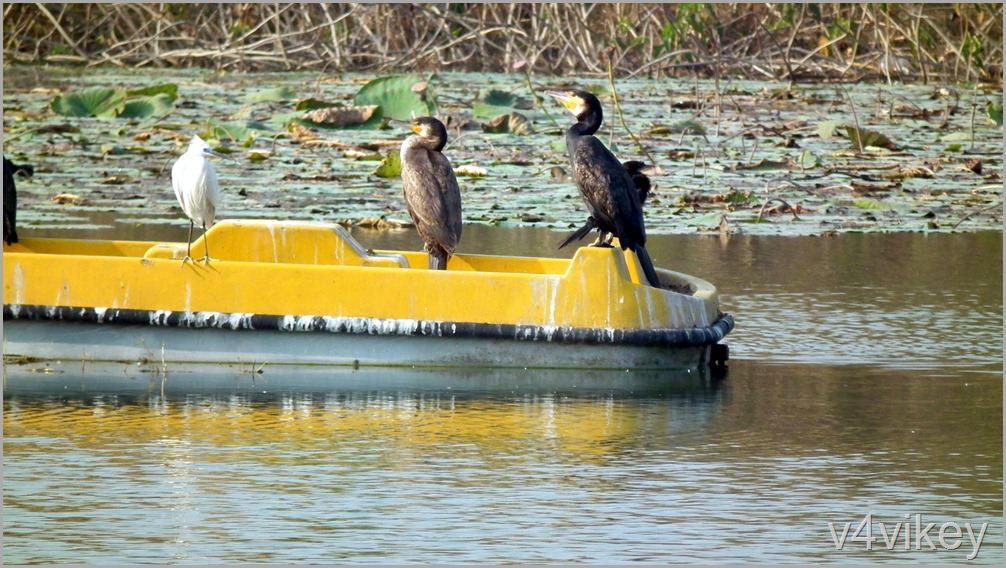
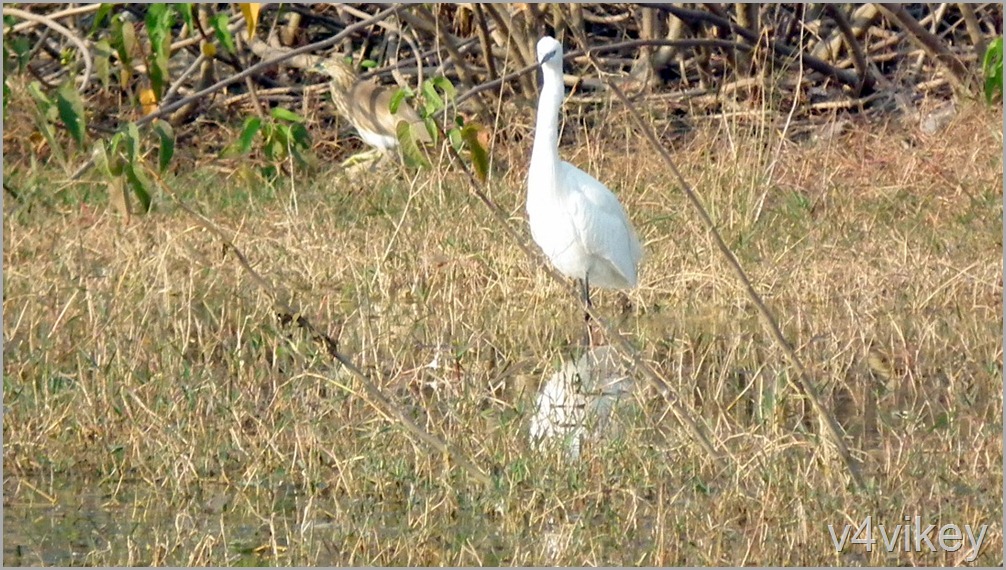
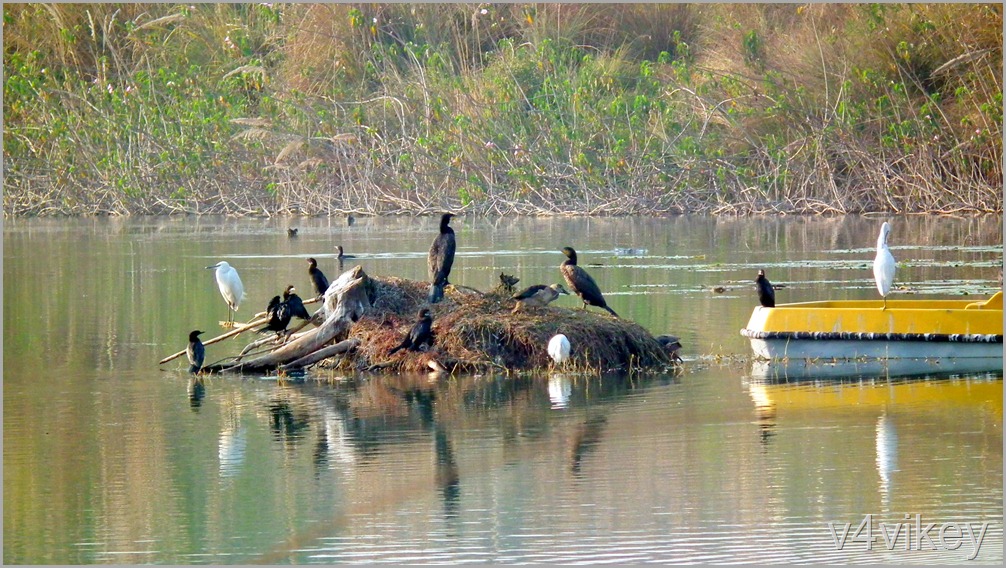
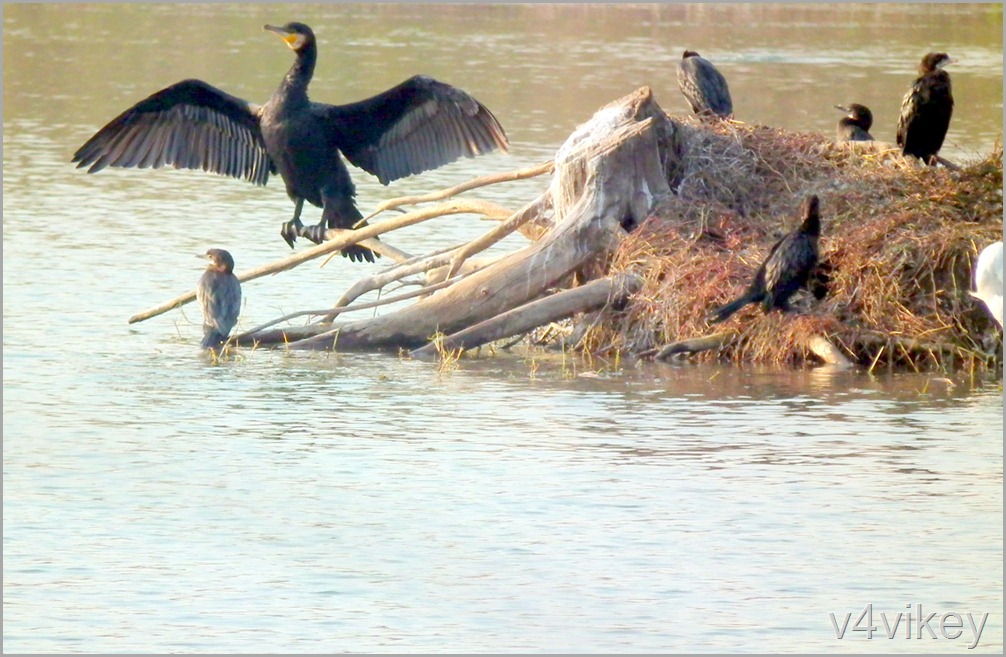

The Black Drongo (Dicrurus macrocercus) is a small Asian passerine bird of the drongo family Dicruridae. It is a common resident breeder in much of tropical southern Asia from southwest Iran through India and Sri Lanka east to southern China and Indonesia. It is a wholly black bird with a distinctive forked tail.
The plumage of the House Sparrow is mostly different shades of grey and brown. The sexes differ: the female is mostly buff, and the male has bolder markings and a reddish back.The male has a dark grey crown from the top of its bill to its back, and chestnut brown on the sides of its head. It has black around its bill, on its throat, and on the spaces between its bill and eyes (lores). It has a small white stripe between the lores and crown and small white spots immediately behind the eyes (post oculars), with black patches below and above them. The underpants are pale grey or white, as are the cheeks, ear coverts, and stripes at the base of the head. The upper back and mantle are a warm brown, with broad black streaks, while the lower back, rump and upper tail coverts are greyish-brown.
The female has no black markings or grey crown. Its upper parts and head are brown with darker streaks around the mantle and a distinct pale super cilium. Its under parts are pale grey-brown. The juvenile is similar to the female adult but deeper brown below and paler above. Juvenile males tend to have darker throats and white post oculars, but these features do not reliably match sex.
Text Source:: http://en.wikipedia.org/wiki/House_Sparrow
The House Sparrow is a bird of the sparrow family Passeridae, found in most parts of the world. A small bird, it has a typical length of 16 cm (6.3 in) and a weight of 24–39.5 g (0.85–1.39 oz). Females and young birds are colored pale brown and grey, and males have brighter black, white, and brown markings. One of about 25 species in the genus Passer, the House Sparrow occurs naturally in most of Europe, the Mediterranean region, and much of Asia. Its intentional or accidental introductions to many regions, including parts of Australia, Africa, and the Americas, make it the most widely distributed wild bird.
The House Sparrow is strongly associated with human habitations, and can live in urban or rural settings. Though found in widely varied habitats and climates, it typically avoids extensive woodlands, grasslands, and deserts away from human development. It feeds mostly on the seeds of grains and weeds, but it is an opportunistic eater and commonly eats insects and many other foods. Its predators include domestic cats, hawks, owls, and many other predatory birds and mammals.
Text Source : http://en.wikipedia.org/wiki/House_Sparrow
The Yellow-footed Green Pigeon (Treron phoenicoptera) also known as Yellow-legged Green Pigeon is a common species of Green Pigeon found in the Indian Subcontinent. They forage in flocks. In the early morning they are often seen sunning on the tops of emergent trees in dense forest areas.